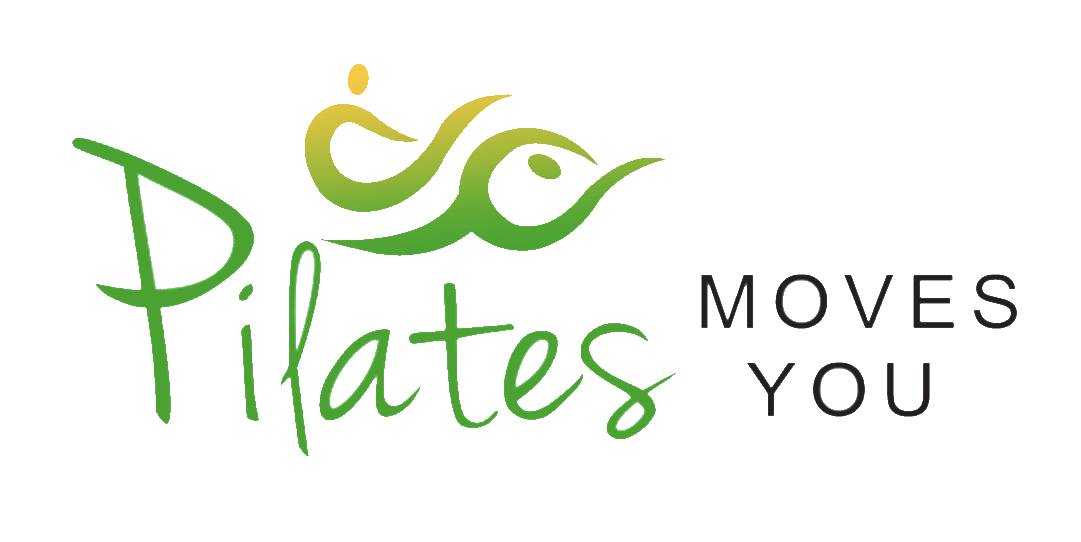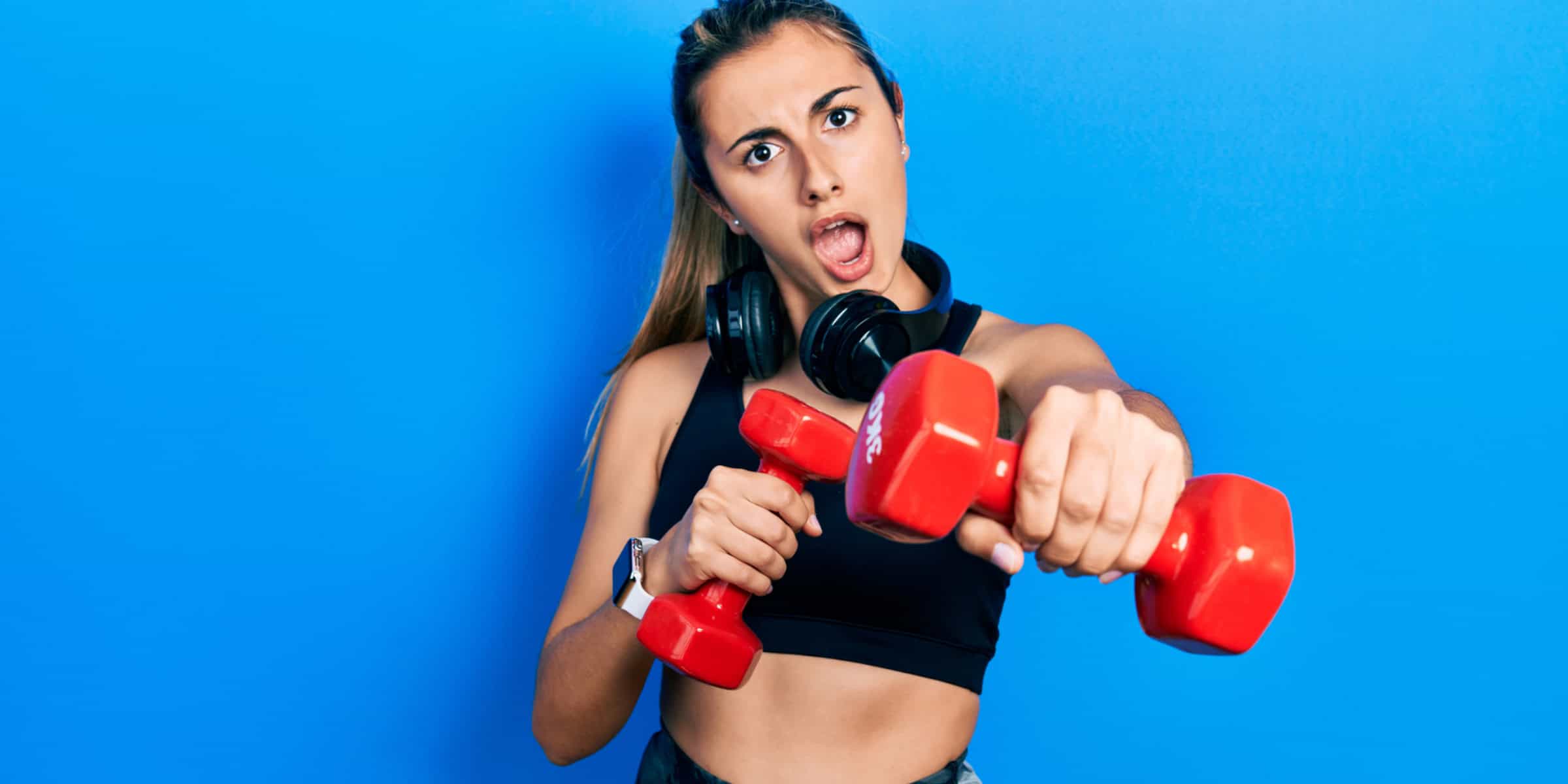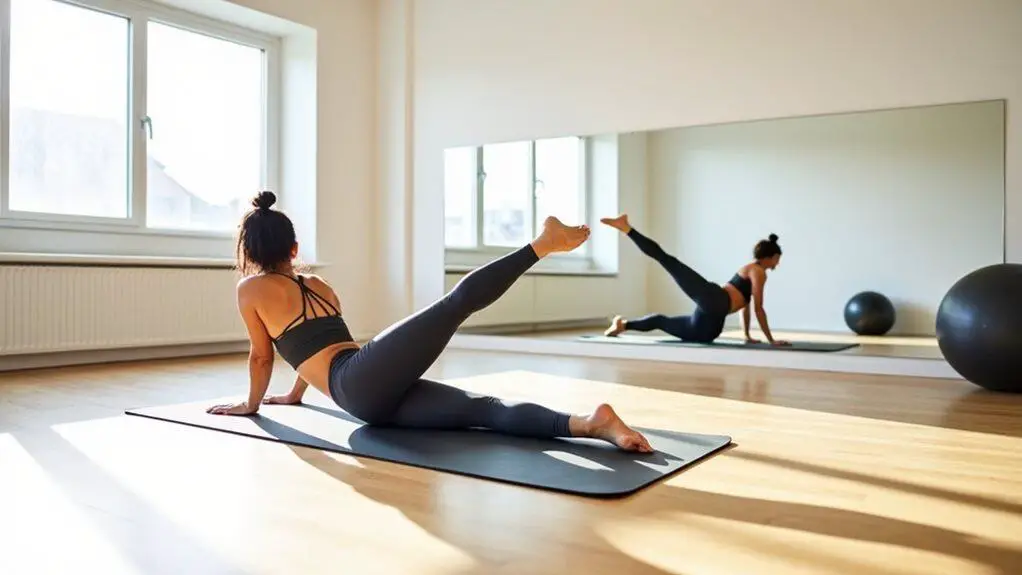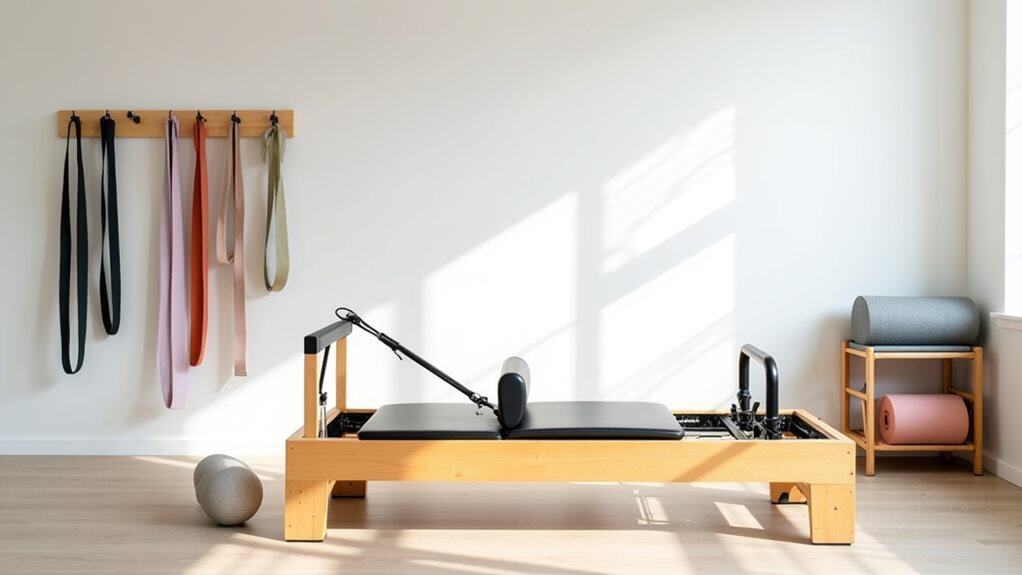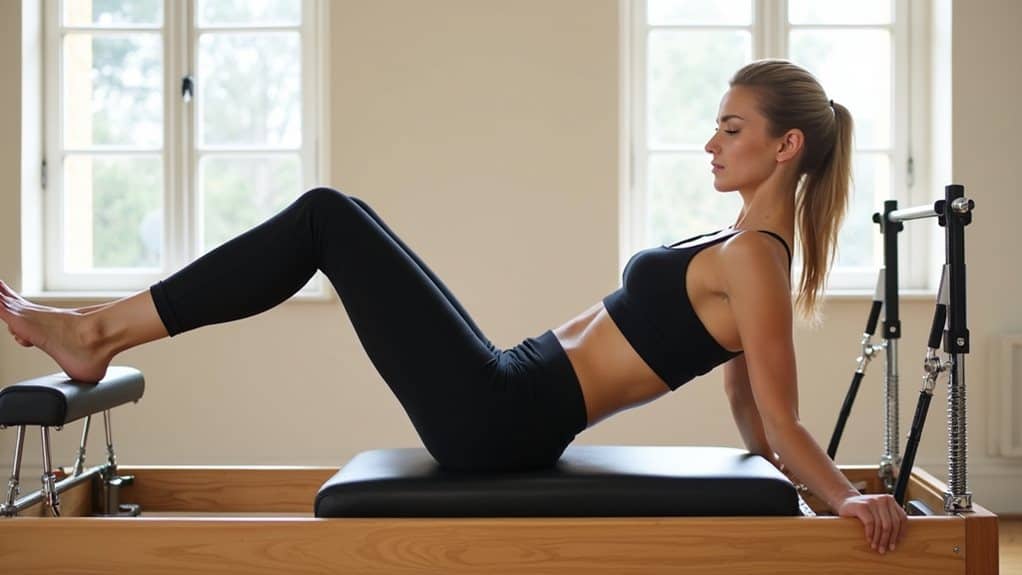Pilates and Power Pilates are two disciplines that are often confused. For those of us who practice them, it’s easy to differentiate between the two. But for those starting out, understanding the differences can be quite daunting.
The main difference between Pilates and Power Pilates is that Power Pilates is a more intense and challenging form of Pilates, with a greater focus on strength, endurance, and cardio. Power Pilates incorporates more dynamic movements, such as jumps and lunges, while traditional Pilates emphasizes controlled and precise movements.
Additionally, Power Pilates may use equipment such as weighted balls, resistance bands, and kettlebells, while traditional Pilates primarily relies on the reformer and other specialized equipment.
In this article, we’ll break down the distinct features of each practice and explain how you can use them to find freedom through movement.
Whether you’re an experienced mover or a total beginner, there is something for everyone in both pilates and power pilates. Both are incredibly effective forms of exercise that will help you become stronger and more flexible – but their approach and focus differ significantly.
By exploring the nuances between them, you will be able to make an informed decision about which is right for you.
Origins And History
Pilates and Power Pilates have their own distinct histories, each one offering a unique approach to the mind body connection.
Pilates was developed in the early 20th century by Joseph Pilates, an exercise enthusiast who created a series of exercises designed to promote physical alignment and strength through conscious movement. As a result, Joseph Pilates’ work was used as a tool for rehabilitation and growth by many people who sought out his teachings. His methodology shifted the focus away from traditional workouts and instead put emphasis on connecting body and mind through mindful movements.
Power Pilates is a contemporary adaptation of Joseph’s original teachings that combines mat work with equipment-based movements to create an intense full-body workout. It focuses on building strength while maintaining good physical alignment, emphasizing the importance of breathing during exercise to maximize effectiveness.
This type of Pilates aims to help practitioners gain control over their bodies and minds through challenging yet enjoyable workouts. The structure of these two practices may be similar, but their origins are clearly distinct – one based on rehabilitation and the other on fitness enhancement.
Whether you prefer the calming effects of classical Pilates or the more intense nature of power Pilates, both offer beneficial benefits for those looking for improved physical alignment and a stronger connection between body and mind. With continued practice, you can discover which one works best for you.
Structure and Format
Pilates and Power Pilates are both forms of exercise, but they have distinct differences.
The main difference between these two forms of exercise is their intensity level; while both are effective ways to improve your fitness level, it’s important to consider your own fitness goals when deciding which one is right for you.
Power Pilates will provide a higher intensity workout than traditional Pilates if greater strength and cardiovascular conditioning are desired outcomes; however, traditional Pilates can be equally as effective if done correctly and with proper form.
Focus And Intensity
Pilates and Power Pilates are often confused as being similar – however, they are in fact quite different. While they both focus on muscle control, posture and mind-body connection, the intensity of each modality varies greatly.
Pilates is a slow, focused practice that seeks to increase awareness of the body while strengthening with proper form and technique.
Power Pilates on the other hand, is a more intense workout that still uses many of the same movements as classical Pilates but at a much faster pace. The level of intensity in Power Pilates can be modified depending on the individual’s fitness level; however it will always be higher than that of traditional Pilates.
As such it’s not well suited for beginners, it’s aimed at those with an understanding of Pilates who want to take things to the next level. Here’s a tutorial video I did for clients to prepare them for my class.
This increased intensity requires a certain level of physical skill and strength to be able to complete correctly, which makes it more suitable for those who have prior experience in exercise or dance. Additionally, it requires mental fortitude and focus to maintain form throughout the faster paced exercises which results in an improved sense of endurance and power over time.
Overall, both styles offer great benefits for those looking to improve their physical health; however one should consider their own abilities before delving into either practice to best maximize their potential gains.
At its core, Pilates offers a way to connect with your body while finding inner strength through movement; whereas power Pilates provides an opportunity to challenge oneself mentally and physically through increased speed and intensity. Both paths have something unique and beneficial to offer any individual seeking better physical health – one just needs to find what works best for them!
Benefits and Advantages
Pilates is a whole-body workout that helps to improve posture, core strength and body alignment. It’s low impact and suitable for all levels of fitness, from beginners to experienced athletes. Power Pilates takes the same principles of Pilates and applies them in a more intense way. It focuses on building strength, improving flexibility, and increasing endurance by challenging the muscles with more dynamic exercises.
Here are just some of the benefits you can expect from practising Power Pilates:
- Strengthen your core – Power Pilates will help you develop strong abdominal and back muscles which are essential for good posture and balance.
- Build endurance – With its dynamic exercises, Power Pilates will help you build up your stamina by pushing your body’s limits in a safe manner.
- Improve flexibility – The various stretching exercises in the routine will help to increase your range of motion and improve your overall flexibility.
- Enhance coordination – By doing complex movements with control and precision, you can enhance coordination between your mind and body for better performance in other activities too.
Whether you’re looking for an overall fitness boost or need something specific like improved posture or core strength, Power Pilates offers a great way to reach those goals without having to take on high-impact exercises that can be hard on the body! Moving onto equipment requirements…
Equipment Requirements
To get the most out of either form of Pilates, it’s important to understand what equipment you’ll need. Let’s take a look at a breakdown:
| Equipment | Pilates | Power Pilates |
|---|---|---|
| Mat | Yes | Yes |
| Resistance Band/Tubing | Optional | Optional |
| Exercise Ball | Optional | Optional |
| Weights | No | Optional |
As you can see from this table, both Pilates and Power Pilates require only a mat to practice on. However, for more advanced exercises, you may want to incorporate the use of resistance bands, an exercise ball, or even weights. It all depends on your individual goals and needs.
In this video I do a 20 minute power Pilates session using small handweights. Don’t have any? You can use cans of food (see my guide on prop substitutions).
No matter which form of exercise you choose, remember that proper breathing techniques are essential not just in order to maximize results but also to reduce the risk of injury. Taking deep breaths into your abdomen helps you focus on your movements while maintaining control over your body during each session.
Frequently Asked Questions
What Types Of Exercises Are Included In Pilates And Power Pilates?
Pilates and Power Pilates are both exercises designed to help improve overall fitness, strength and flexibility.
Stretching techniques combined with muscle toning make up the core of both practices.
Pilates focuses on gentle movements that flow together in a rhythmic fashion while Power Pilates utilizes more dynamic sequences to challenge the body further.
Both practices can be adapted to suit individual needs, allowing you to reach your goals faster and with more ease.
Ultimately, they both enable you to gain freedom within your body by improving posture, balance and coordination.
Is There An Age Limit For Participating In Pilates And Power Pilates?
Pilates and Power Pilates are suitable for all ages, with no upper age limit! Whether you’re looking for injury prevention, muscle toning or simply some ‘me time’, the practice of Pilates and Power Pilates can benefit all body types.
In particular, an instructor-led class can help to ensure that your movements are precise and carefully tailored to suit any physical limitations. With a focus on balance and alignment, it’s also a great way to find freedom in movement – something we could all benefit from!
What Type Of Clothing Should Be Worn For Pilates And Power Pilates?
Pilates and power pilates are both exercises that require comfortable clothing that allows for freedom of movement.
Breathable fabric is recommended to help maintain the focus on breathing techniques, while providing support to your core strength.
It’s a good idea to wear something fitted so you can easily monitor your body during the workout, see this article on what clothing to wear.
While there are no hard and fast rules when it comes to what you should wear, the key takeaway is that you should be comfortable and able to move freely.
Conclusion
It’s clear that Pilates and Power Pilates provide different types of exercise, and the cost and difficulty can vary.
Ultimately, the best form of exercise for you is the one that you enjoy and can do safely.
It’s worth considering all aspects before making a decision on which type of Pilates to pursue.
For those looking for a challenge, Power Pilates is definitely worth exploring.
The intensity can be tailored to suit individual needs, making it an ideal choice for those who want to push themselves further.
Whether you’re just starting out or are an experienced practitioner, there’s something in both Pilates and Power Pilates for everyone.
So why not give them both a try?
After all, with regular practice comes great rewards!
